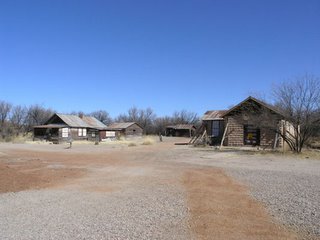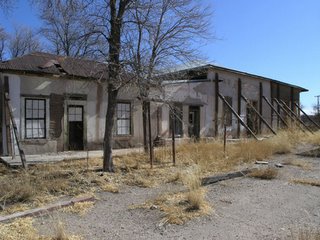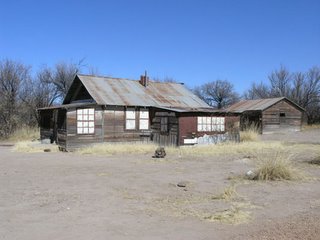
On Saturday January 21st we drove out to find the ghost town named Fairbank, AZ. Fairbank has an interesting history. Here it is according to the Bureau of Land Management – San Pedro Riparian:
“Fairbank is a ‘ghost town’ located within the San Pedro Riparian National Conservation Area (NCA), along the San Pedro River. Its life as a town began with the construction of a railroad in 1881, and it soon became an important depot as well as the closest railroad stop to Tombstone, then one of the largest western cities (15,000 in 1882).

Originally called Junction City, Kendall, then Fairbanks, it was officially named Fairbank on May 16, 1883. The name refers to N.K. Fairbank of Chicago, who helped finance the railroad.
 The town was built on an old Mexican land grant, the San Juan de las Boquillas y Nogales, which was bought by the Boquillas Land and Cattle Company in 1901. The company evicted all potential landowners, but continued to lease the mercantile building and a few residences well into the 1970s.
The town was built on an old Mexican land grant, the San Juan de las Boquillas y Nogales, which was bought by the Boquillas Land and Cattle Company in 1901. The company evicted all potential landowners, but continued to lease the mercantile building and a few residences well into the 1970s.The Bureau of Land Management acquired the land that was once the Mexican Land Grant in 1986 as part of the San Pedro Riparian NCA. Today the area is open for the public to enjoy.”

I think the most interesting part of the ghost town for me was the cemetery. We didn’t get any pictures of it, but what an interesting place. It’s about a half-mile walk from the town proper along an easy trail. The only difficult part is when you actually get to the hill the cemetery sits on and you have to walk up a little hill. At the top of the hill rest dozens of piles of rocks some with wooden crossed fashioned and stuck in the ground, some of the crosses have toppled, some don’t have crosses at all but have dead bushes that tried to grow over them. It was strange to stand at the top of the hill and just turn in a circle and notice all the piles of rocks surrounding you, they were everywhere, and know that each was a grave. There were very few with markers and those with marker, you couldn’t hardly read. There were several that had modern day rosaries draped on their crosses, and one of a child that has small stuffed animals at what I would assume is the head. Really a very interesting place.
;-)K